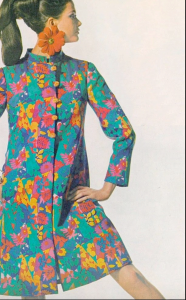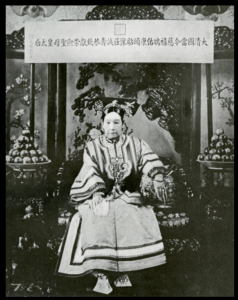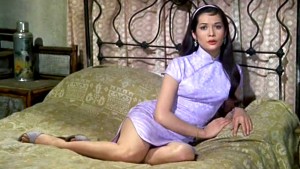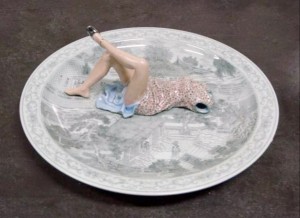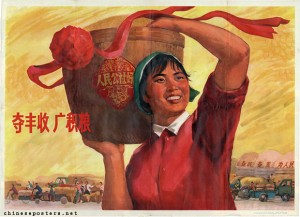
“Strive for an abundant harvest, amass grain”, 1973. Artist unknown, photo taken from: chineseposters.net
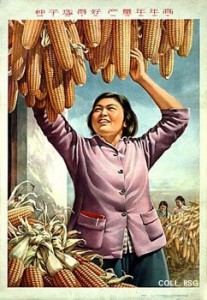 “The seeds have been well selected, the harvest is more bountiful every year”, 1964. Artist unknown, photo taken from: chineseposters.net
“The seeds have been well selected, the harvest is more bountiful every year”, 1964. Artist unknown, photo taken from: chineseposters.net
For this weeks Word Press, I decided to focus on women in the Mao suit during Maos reign. These two photos show two different women working in the countryside who look more than happy to be there. During this time Mao was shipping many soldiers in his Red Army out to the countryside, due to their actions destroying urban areas. The Red Guards had become too faithful, resulting in many acts of violence and destruction. Mao began sending his troops to the countryside and encouraging them to learn from peasantry. During these days the Red Army would live and work in the country as Mao ordered. Propaganda posters, like the ones above, encouraged the Red Army to head to the rural areas.
your analysis could start from here:
The two posters above both feature women working in the fields. The background of each shows more workers and the crop to which they are tending. The smile on these two women’s faces look natural and genuine, showcasing a feeling that they must be very happy there. Red can be noticed in both by Maos words printed somewhere on the poster as well as clothing and the slight edge of the little red book found in a pocket. Through these two poster, I hope to communicate that women, during this time, were meant to be seen as equal to the men. They were able to work the fields and participate in the Cultural Revolution, just as much as their male counterparts.
nice statement
The first poster shows a women smiling widely as she holds a barrel of hay, proud to be doing this work. She is dressed in a red suit with her hair tied back. I immediately noticed her broad shoulders and her strength. She has been masculinized by her strength and the work she is doing. She seems very simple. Depicted without makeup and hair pulled back, from the neck up she could easily be mistaken for a man. However, it is her torso and chest that showcase her femininity. The person in this poster is a women for a reason. It is meant to express her support for Mao and what she has learned from peasantry.
denotation 1) the peasant woman as the subject/connotation; 2) the red color/connotation; and 3) the basket on her shoulder/connotation; 4) the background/connotation
The second poster, depicts a bit of a different woman. Her slender frame easily gives way to her gender. Just as the other poster, she is smiley widely while doing her work, proud to be apart of Mao’s Red Army. The one thing I found most interesting about this poster was the slight peek of the little red book from the pocket of her Mao suit. This one reference can express a lot about this woman. It shows that she is apart of Mao’s Red Army, just like many people of her generation. She keeps the book close to her while she does her work so that she always has his words with her. Both posters depict Mao’s words somewhere on the poster, but the fact that this woman has it on her person, shows her faithfulness to her leader.
Overall, the two poster of women express the work that girls were doing during the Cultural Revolution. They were not simply sitting on the sidelines, but transported to the countryside along with men and boys to learn from the peasants as Mao wanted them to do. The posters show the idea of a genderless society and the equality for women that was uncovered during the Revolution.
try to make the writing more analytical.

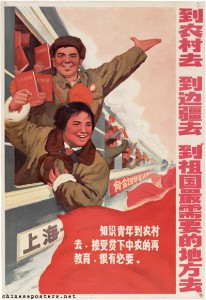
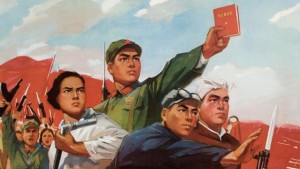
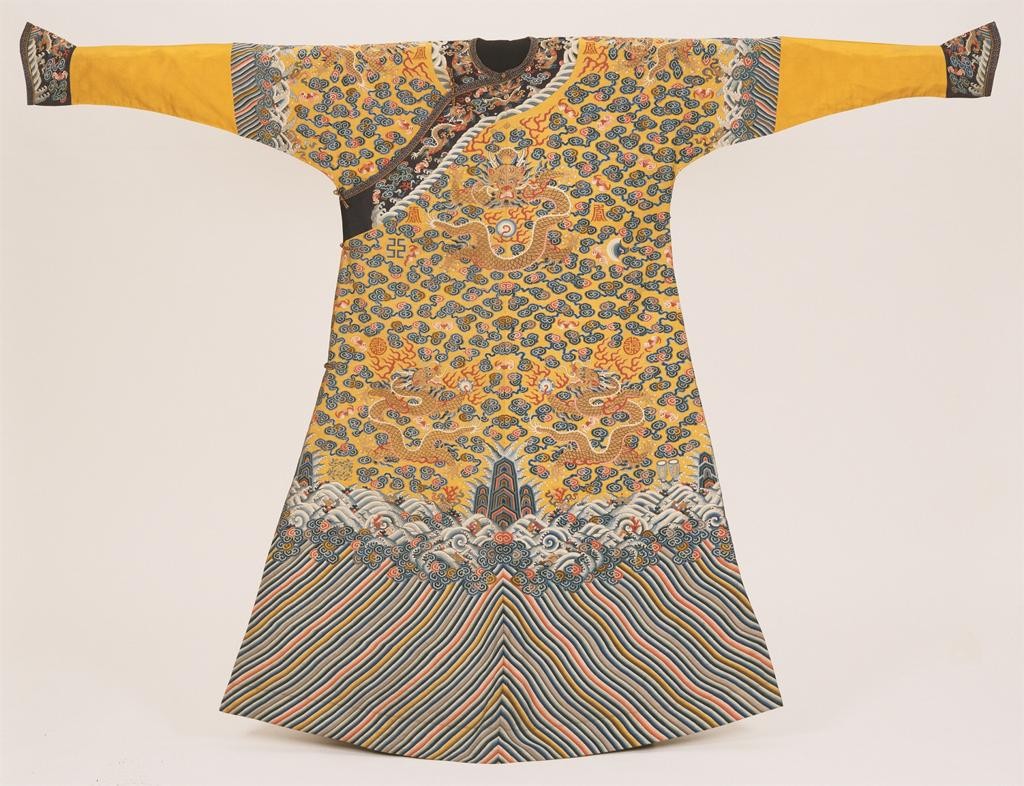
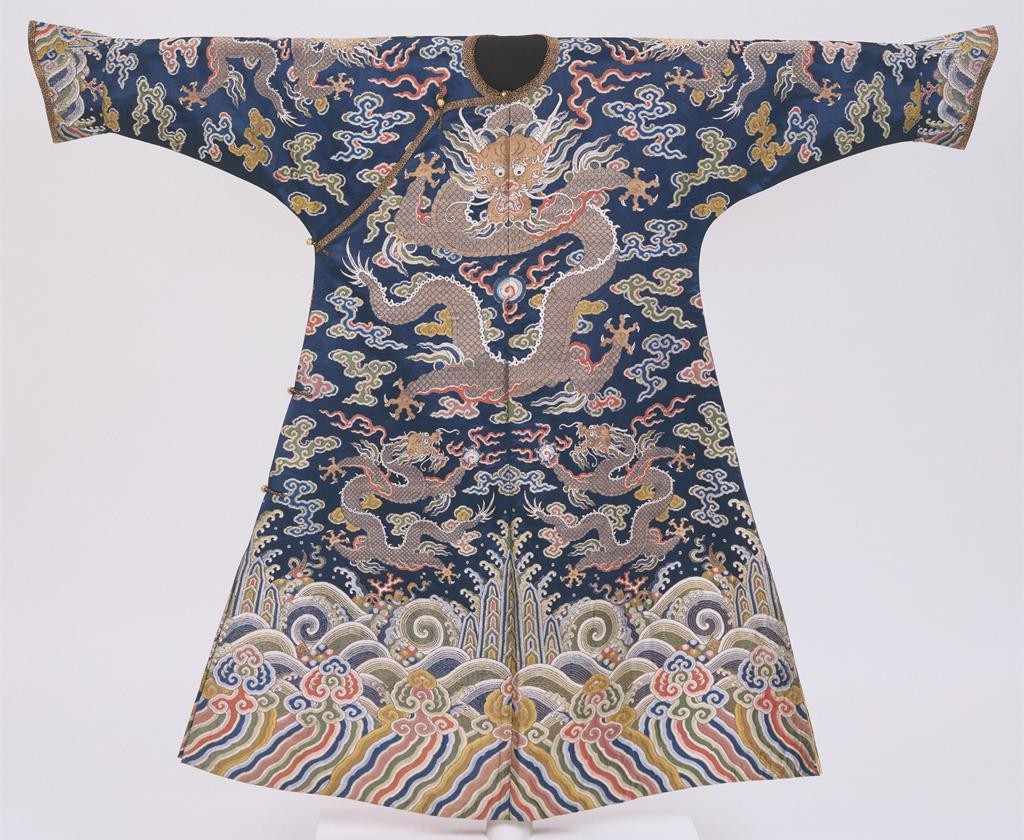
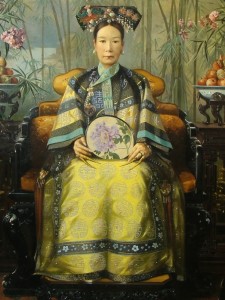
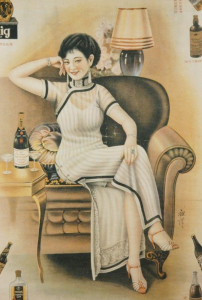
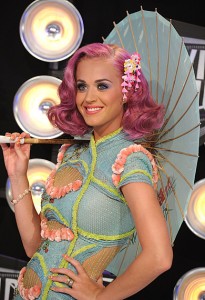 (Katy Perry at the Grammy Awards in a Western interpretation of the qipao)
(Katy Perry at the Grammy Awards in a Western interpretation of the qipao)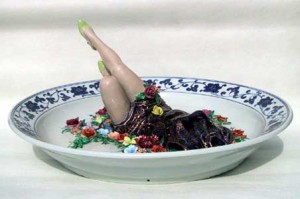 Liu Jianhua, Color Ceramic Series – Game, Ceramic Sculpture 2000, 52 x 52 x 23 cm, LJH30
Liu Jianhua, Color Ceramic Series – Game, Ceramic Sculpture 2000, 52 x 52 x 23 cm, LJH30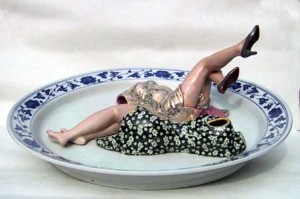 (Liu Jianhua, Color Ceramic Series – Game ,Ceramic Sculpture 2000, 61 x 61 x 15 cm, LJH12)
(Liu Jianhua, Color Ceramic Series – Game ,Ceramic Sculpture 2000, 61 x 61 x 15 cm, LJH12)